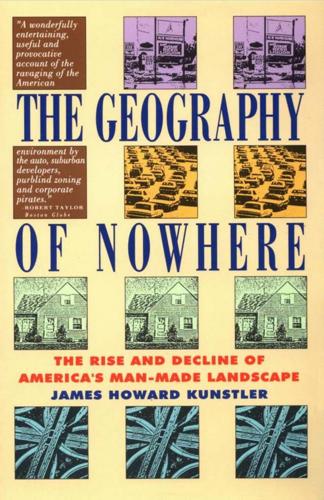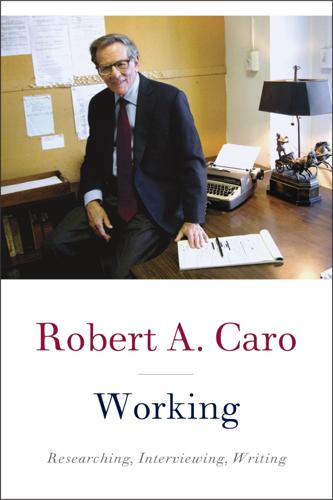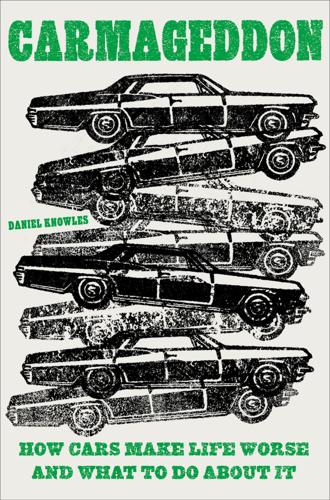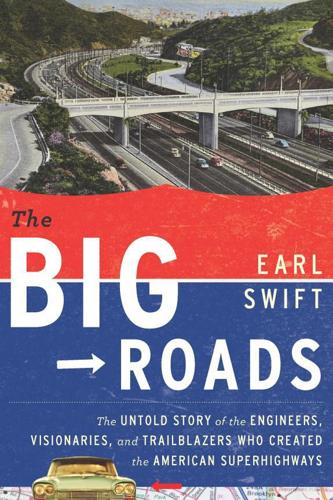
The power broker : Robert Moses and the fall of New York
by
Caro, Robert A
Published 14 Apr 1975
In a secret meeting with Hewitt and Hutchinson, the Governor agreed that he would not ask for funds to acquire right-of-way for the Northern State Parkway until Moses came up with a route acceptable to the barons, and he agreed that, even after the right-of-way had been acquired, he would not ask for funds to begin construction until the Southern State Parkway had reached the point at which it would connect with the Jones Beach causeway, a point about fifteen miles into Nassau County. In return, Hewitt and Hutchinson agreed that the Southern State Parkway could be built and that the entire $15,000,000 proceeds of the park referendum would be segregated in 1926; work could therefore begin immediately on Moses' upstate park program and his Long Island projects, including Jones Beach, the causeway leading to it from the Southern State Parkway—and Deer Range (soon to be August Heckscher) State Park.
…
The sands were running out on Al Smith's Governorship. Moses' construction crews did not quit for the winter of 1927-28; their grading machines pushed aside snow as well as earth as they smoothed the path for the Southern State Parkway. The Great South Bay froze solid; the men stretching the Jones Beach causeway across it pitched tents on the ice and lived on it. Early in 1928, an astonished Hutchinson and Hewitt realized that the completion of the Southern State Parkway and Jones Beach causeway, on which they had hinged the beginning of the Northern State and which they had assumed was years, if not decades, away, was rapidly approaching.
…
But they rose almost as steeply on Moses' roads, the roads built—at a colossal public investment—to free the public from traffic lights and intersecting streets. Moses' "modern" rebuilt Southern State Parkway, for example, paralleled the "obsolete" Merrick Road and Sunrise Highway. The curves showing time and distance covered in that time for each of those roads ran almost parallel, rising and falling together. "Until you get out to Wantagh," Jack Sheridan says, "there's no advantage to the Southern State Parkway over the Sunrise Highway [or Merrick Road]. Which is a pretty horrible thought." But those charts, graphic displays of the present, were not the most disturbing things in that cinder-block room.

Road to Nowhere: What Silicon Valley Gets Wrong About the Future of Transportation
by
Paris Marx
Published 4 Jul 2022
Louis pushed for highway plans that extended into the very heart of US cities.28 Not only were these highways more convenient for suburban residents, but they allowed the planners to use them to destroy Black neighborhoods by removing “blighted” areas, which became a major focus of the urban renewal agenda that had already begun demolishing poor and minority neighborhoods to concentrate their residents in isolated public housing projects. In just one example of how racism was built into the physical environment of major cities, Moses ordered the overpass bridges on the Southern State Parkway to be low enough so that buses could not drive under them, thus ensuring that poor and Black bus riders could not reach Jones Beach. The highway construction boom slowed by the end of the 1960s as costs rose faster than inflation, but their construction had also created a new coalition to challenge them: environmental activists, civil rights groups, the consumer movement, and urban residents.
…
See bicycles Seattle, WA, ride-hailing services in, 99 Securities and Exchange Commission (SEC), 138 Sedran, Thomas, 129–30 self-checkout, 194–5 self-driving cars accidents with, 132–5 Autonomous Land Vehicle project, 119 Brin on, 114–5 challenges of, 126, 129–30 environmental dilemmas and, 131–2 Google, 6 Intermodal Surface Transportation Efficiency Act (1991), 119 Kalanick on, 116 Navlab autonomous vehicles, 119–20 Ng on, 126 pedestrians and, 127 pricing of, 127–8 pulp science fiction and, 118 Radio Corporation of America (RCA) and, 118 software for, 122–3 speed and, 123–4 Tesla’s Autopilot system, 137–8 Tsukuba Mechanical, 119 VaMoRs, 119 Sepulveda Pass, 141 Shanghai Gigafactory (Tesla), 83 Sheffield, UK, docked bikeshare system in, 170–1 Sheller, Mimi, 158, 207 Shell Oil City of Tomorrow, 2 Shill, Gregory, 30 shipping industry, 49 shut-in economy, 196–7 Sidewalk Labs, 228–30 Silicon Valley, 37–8, 44–5 skates (platforms), 146–7 Skyports, 154–5 Small Business Investment Company, 55 smart homes, 60–1 smartphone apps, 55, 181, 194–5 Smiley, Lauren, 196 Social Bicycles (SoBi), 167–8 Socialist Left Party, 209 social media, 61–2 SolarCity, 55, 143, 188 solar panels, Musk on, 188–9 Southern State Parkway, 26 Soviet Union, 39 space program, 48 SpaceX, 55, 144, 148, 150–1 speed limiter referendum, 19–20 speed limits, 18–20 Sputnik I satellite, 39, 45 standardized containers, increasing use of, 49 Standard Oil of California, 21 Stanford Industrial Park, 40 Stanford Research Institute, 54–5 Stanford University, 39–40, 55, 120 Stark, Tony, 70 Starley, John Kemp, 160, 162 Starship Technologies, 172, 173–5, 176–7 Stop de Kindermoord, 205 streetcars, 12–3, 15, 21, 92, 160 “subscriber city,” 197 suburbanization, 23 suburbs, 12–3 superhighway plan (Detroit), 22 supply chains, 50 Surface Transportation Policy Project, 141 surge pricing, for ride-hailing services, 100 Swisher, Kara, 116–7 Taft-Hartley (1947), 112 taxi medallions, 104–5 taxi services about, 95–6, 101–2, 104–5 industry regulation and, 107, 110–1, 185 Taylor, Isaac, 122 TCP/IP protocol, 50 TechGirls Canada, 228–9 tech industry development of, 9–10 growth of, 4, 180–5 speed of technological innovation, 48 technological solutionism, 59 Tesla, 5–6, 55, 63–4, 70, 72, 73, 82–4, 85–6, 116, 137–8, 143, 147, 158–9, 188, 189, 190 Tesla, Nikola, 70 Texas, Interstate Highway System in, 140 Thacker Pass, NV, 79, 226 Thiel, Peter, 46–7 Thrun, Sebastian, 121 Toronto, Canada, 228–30 Toyota, 116, 121, 122 train system in France, 220 in North America, 218–9 transportation bus system, 21, 215, 219 computerized planning systems for, 130 flying cars, 151–2, 159 history of, 7 jitneys, 89–91, 92, 108–9 Navlab autonomous vehicles, 119–20 present-day dominance of, 34–5 taxi services, 95–6, 101–2, 104–5, 107, 110–1, 185 three-dimensional vs. two-dimensional, 145 train system, 218–9, 220 tunnels for, 144–51, 154–5, 158–9, 189 vertical takeoff and landing vehicle (VTOL/eVTOL), 152–5, 157, 158 walking as primary means of, 12 Trudeau, Justin, 79–80, 228 Trump, Donald, 78 Tsukuba Mechanical, 119 tunnels, for transportation, 144–51, 154–5, 158–9, 189 Turner, Fred, 41, 43, 52 Turner, Matthew, 141–2 Uber about, 115 acquisition of Jump, 166–8 Advanced Technologies Group (ATG), 133, 134–5 benefits of, 94 campaigns for, 103 changed from Ford Fusion to Volvo XC90 SUVs, 134–5 compared with taxi services, 95–6 core business of, 93 costs for, 107–8 Covid-19 and, 108 customer base for, 100–1 divisions of, 153–4, 184 driver pay for, 103–4, 107 effect on traffic of, 100 employee classification for, 111–2 founding of, 181 Greyball and, 110 growth of, 97, 105–6 industry regulation and, 101–2, 107, 110–1, 112–3, 156, 174, 185 loss of money by, 106–7, 184–5 marketing by, 158–9 media representation of, 94–5 micromobility services of, 166–9 model of, 102–3 in New York City, 98–9 origins of, 92–3, 109 pricing for, 184 promises made by, 186 pulls out of China, 152 refocus on ride-hailing and food delivery services, 184–5 safety record of, 134, 135–6 in San Francisco, 97–8 walking vs., 191 Uber Air, 153–4, 155, 157, 159 Uber Copter, 155–6 Uber Eats, 184–5 Uber Elevate, 152, 154, 159 unemployment rate, 95–6 unions, for taxi drivers, 101–2 United Kingdom (UK) docked bikeshare system in, 170–1 ecommerce in, 193 University of Technology Sydney, 75 University Paris-East, 169–70 Unsafe at Any Speed (Nader), 27–8 Untokening collective, 218 Urban Challenge, 120 urban renewal strategy, 26 Urry, John, 32–3, 143 US Air Force, 50 US Department of Defense, 50 US-Japan Semiconductor Trade Agreement (1986), 45 US National Labor Relations Act, 102 VaMoRs, 119 Vansintjan, Aaron, 222 Vasquez, Rafaela, 132, 135 Vélib’ bikeshare system, 210 venture capitalists, 186–7, 199 vertical takeoff and landing vehicle (VTOL/eVTOL), 152–5, 157, 158 Very Far Away from Anywhere Else (Le Guin), 202 Vietnam War, 39, 40, 43, 49 VoiceOver, 175 Volkswagen, 77, 78, 129–30 Volocopter, 152 Volvo XC90 SUVs, 134–5 Walker, Jarrett, 59, 142–3, 181–2 walking, as means of transportation, 12, 191 Washington, DC, ride-hailing services in, 99 Waterfront Toronto, 228–9, 230, 231 Waymo, 133, 138, 186 web 2.0, 57 WeWork, 181, 182–3 white people, mortgages and, 29 Who Killed the Electric Car?

The Geography of Nowhere: The Rise and Decline of America's Man-Made Landscape
by
James Howard Kunstler
Published 31 May 1993
He had big plans for these cars, but little thought for the long-term consequences of his plans; scant vision of what the landscape would become, only dreams of his marvelous high ways arcing across the landscape. Indeed, Long Island would become the prototypical landscape of highways and their accessories, while both the farms and the millionaires' estates were bulldozed into parking lots. Before the Depression, Moses had built the Southern State Parkway - 9 7 _ T H E G E O G R A P H Y O F N O W H E R E from the city out to Jones Beach. Here he learned how to seize land by eminent domain, to use commission lawyers to confound his opponents in the courts, and to exploit the press to slander opponents-a habit that backfired badly the one time he ran for public office and got drubbed by Herbert Lehman in 1934.
…
. , 190-91, 193 Smith, Adam, 152 Smith, Alfred E . , 97 smog, 212-13 Snow, George W., 162 Soane, John, 157 socialism, 70-71, 74 Solomon, Daniel, 30, 260 South Coast Air Quality Manage ment District (AQMD), 213-14 Southeast Expressway (Boston, Mass. ), 125 Southern California Association of Governments, 214 Southern Pacific Railroad, 208 Southern State Parkway (Long Is land, N . Y . ) , 97-98 Southfield Freeway ( Detroit, Mich . ) , 199 Soviet Union, 70, 103 "Space Mountain" ride ( Disney World), 222 Spanish Colonial style, 209 speculation, 26 Speedwell, 18-19 Speer, Albert, 76 Sprague, Frank Julian, 87 sprawl, urban, 15, 264 Spreckles, Claus, 53 Springfield, Ill., 33 "stagflation," 109, 205 Stalin, Joseph, 76 Standard Oil of California, 91, 211 steel, structural, 65, 66 Stern, Robert A.

Working
by
Robert A. Caro
Published 8 Apr 2019
And, since one of the properties—the one at Wantagh—ran all the way down to the bay; another road, connecting with the road coming out from New York, could be built south down to the bay without any purchase or condemnation at all. And, since the bay was so shallow, it ought to be easy to construct a causeway from the end of the road to the barrier beach. “That was the idea behind Jones Beach and the Southern State Parkway,” Robert Moses told me. “I thought of it all in a moment.” Standing there beside me, the wind whipping his hair, the grip on my arm still tight, the gray eyes burning, he was young again, the youthful visionary who had dreamed a dream of a beach and a park and a parkway system greater than the world had ever seen

Carmageddon: How Cars Make Life Worse and What to Do About It
by
Daniel Knowles
Published 27 Mar 2023
In total Moses was responsible for the construction of 700 miles of road across the city. According to Robert Caro’s masterful biography, The Power Broker, he expressly worked against those New Yorkers who could not afford to buy cars. He himself went everywhere in a fleet of chauffeured limousines, paid for by taxpayers. Some of the roads he built, such as the Southern State Parkway, purposely had bridges over them that were too low for buses to be able to pass through. Ostensibly that was to stop trucks from using them, but the reality, at least according to Sid Shapiro, the chief engineer of the Long Island State Parks Commission, was that is also kept out the masses (and particularly Black people) from the beaches that Moses had opened.

Uneasy Street: The Anxieties of Affluence
by
Rachel Sherman
Published 21 Aug 2017
She also thought her husband failed to understand how much work she did not only taking care of their son but managing their real estate, which included a Manhattan apartment, a summer home on Long Island, and a rental property. Also like Alexis, Stephanie said she had had more control over money when she was earning it herself. Driving home to Brooklyn along the tree-lined Southern State Parkway, I thought about the emotions around spending that these women had described, including anxiety, frustration, denial, and desire. I considered the power struggles over the control of money that they were clearly engaged in with their husbands, Alexis in a more muted way, Stephanie more overtly.

The Big Roads: The Untold Story of the Engineers, Visionaries, and Trailblazers Who Created the American Superhighways
by
Earl Swift
Published 8 Jun 2011
Over a career that stretched into the late sixties, Moses would prove himself a brilliant politician, a bold and creative builder of highways, parks, all of New York's great twentieth-century bridges, and acre on acre of housing—and an artful manipulator who consolidated and wielded enormous power beyond interference from a procession of mayors and governors. In 1926 he was still gathering his tools, but already he was acquiring land for the future Southern State Parkway, the Cross-Island Parkway, and the promenades, parking lots, and bathhouses at Jones Beach. He'd been talking to property owners out at Montauk for a couple of years. Fisher lost the skirmish. Hither Hills became a state park, as did a twenty-two-acre piece of property at the peninsula's tip.

Parks Directory of the United States
by
Darren L. Smith
and
Kay Gill
Published 1 Jan 2004
Special Features: Park is located at the tip of a peninsula in the Rockaways that juts out into the Mott Basin on the eastern shore of Jamaica Bay. Its diverse terrain includes beachfront, wetland, and woodlands, which helps make it an ideal habitat for migrating and nesting birds. Park’s goal is to preserve the existing natural systems. Size: 463 acres. Location: Exit 38 off Southern State Parkway, north of Babylon, 42 miles from Manhattan. Facilities: Picnic areas and pavilions (u), playgrounds (u), playing fields, horseshoe and basketball courts, trails (including nature trail), food concession (u), boat rentals (u). Activities: Boating (no power boats), fishing, hiking, bicycling, horseback riding, recreation programs (u).
…
Special Features: Located on Great South Bay, park attacts more than a million visitors a year. Its campgrounds were ranked among the top 100 in the US in 2005. ★3469★ HEMPSTEAD LAKE STATE PARK West Hempstead, NY 11552 Web: www.nysparks.com/parks/info.asp?parkId=155 Phone: 516-766-1029 Size: 737 acres. Location: Exit 18 off Southern State Parkway in West Hempstead. Facilities: Picnic areas (u), picnic pavilions (u), food concession (u), hiking and biking trails, bridle trails, boat launch (cartop boats only), 20 tennis courts (u), basketball courts, playgrounds (u). Activities: Fishing, hiking, biking, horseback riding, tennis, cross-country skiing, ice skating, ice fishing, recreation programs (u).
…
The preserve is a favorite with birders and has been designated an Important Bird Area, with 180 species of birds recorded there. ★3539★ ROBERT MOSES STATE PARK - LONG ISLAND c/o Long Island Regional Office PO Box 247 Babylon, NY 11702 Web: www.nysparks.com/parks/info.asp?parkId=45 Phone: 631-669-0449 Size: 875 acres. Location: 48 miles from Manhattan via Southern State Parkway. Facilities: Picnic area (u), food (u), beach (u), marina, showers, 18-hole pitch & putt golf course, playground. Activities: Boating, fishing, swimming, golf, recreation programs. Special Features: Park features five miles of ocean beach and a day-use boat basin that can accommodate 40 boats. 9.

The Rise and Fall of American Growth: The U.S. Standard of Living Since the Civil War (The Princeton Economic History of the Western World)
by
Robert J. Gordon
Published 12 Jan 2016
Workers who benefited from paid vacations could now drive hundreds of miles to visit relatives or see attractions. In some areas, new attractions were built specifically for travelers arriving by automobile that were not accessible by transit or railroad. For instance, by 1929, Robert Moses had built the Southern State Parkway on Long Island, which took automobile travelers to Jones Beach, with its six miles of waterfront and its 23,000 parking spaces for their cars.133 Before 1920, there was no commerce along the highways between one city or town and the next. Novelist Eudora Welty captured the staccato alternation of open countryside and discrete town borders, with nothing in between, in memories of a childhood trip taken in 1917 or 1918: My father would drive sizing up the towns, inspecting the hotel in each, deciding where we could safely spend the night.